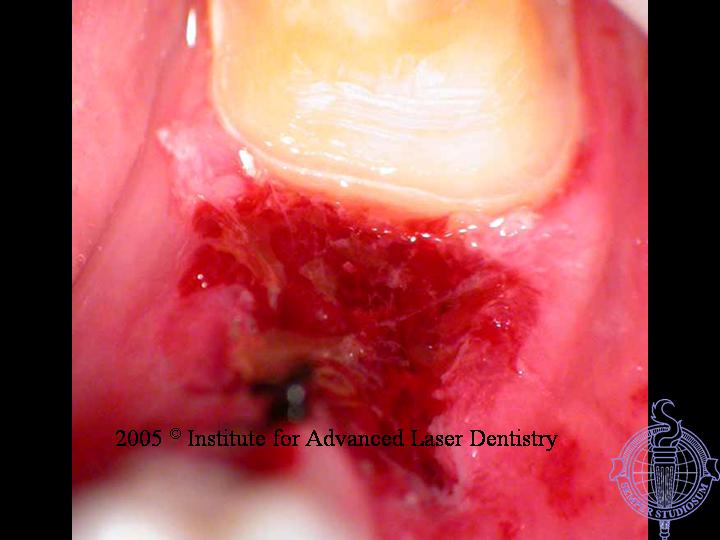Allen–
Pulse duration (time) approximately = zone/dimension (in microns) of thermal effect.
100 usec PD (time) approx = 100 microns (dimensional) zone of thermal effect
250 usec approx = 250 microns
etc……
So you are correct about your assumptions. One needs to be well trained/cautioned about using long PD in thin tissue/bone–like around anterior teeth vs bulky mandibular bone.
“Wet” hemostasis is a red thrombus that also contains fibrin. We also refer to it as a “stable fibrin clot” as such:
3 minutes immediately post op extraction and 650 usec long pulse duration (with one suture on the mesial due to torn tissue). NOTE: the grey fibrin strands coarsing through the clot, and the areas of thrombi.

Thanks for the great question.
Bob
(Edited by Robert Gregg DDS at 12:25 am on July 22, 2005)